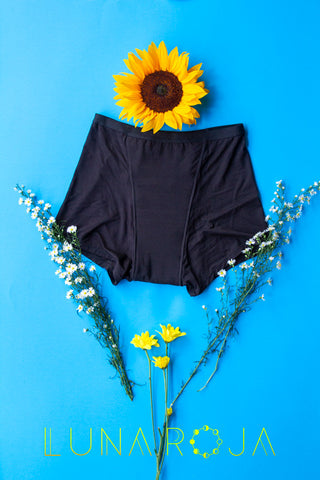Nine curious facts about menstruation
More cycles than in ancient times
Today, women experience menstruation from an earlier age, around age 12, and live longer. Furthermore, with fewer children compared to yesteryear, they accumulate around 400 menstrual cycles, compared to the 100 that were recorded during the Middle Ages. In those days, women were commonly pregnant, lactating, or, sadly, no longer with us.
A small glass of red wine
The volume of blood lost during each menstruation is equivalent to half a glass. This amount is much less than that proposed by Hippocrates, who suggested that women lost a considerable amount of blood, giving an image of abundant bleeding. This perception was taken up and amplified by the menstrual products industry, according to the author in conversations.
Persistence of ancient enigmas
Menstruation, and the flow that comes from it, has been an enigma to many cultures throughout history. Although this mystery has largely been solved, a question arises: why does it occur with a monthly regularity? It has no relation to lunar cycles, as one might think.
Rituals and menstruation
In various cultures, the arrival of the first menstruation, known as "menarche", has been a cause for celebration and rituals: a feast in Japan, a blow to the face in Belarus or a forehead painted with blood in Serbia. On the other hand, there is no evidence that a similar celebration exists for the first male ejaculation.
Male bleeding in history
Surprisingly, there have been cultures where rituals were practiced to induce bleeding in the penis. Whether as a symbol of purification or as a rite of virility, small incisions were made at the end of the male organ. An Australian researcher called New Guinea "the island of menstruating men" because of these practices.
Tampon prototypes in ancient times
Innovation in feminine hygiene is not a recent concept. Evidence was found that ancient Egyptian women already used cotton-covered canes, similar to modern tampons. It is curious to think that centuries passed before these products reached Europe in the 20th century.
Tampons questioned for their components
Unusually, since tampons and pads are labeled as "medical tools", there is no obligation for companies to disclose all of their ingredients. Despite this, it is known that they contain substances such as polyethylene and polypropylene, derived from petroleum, which interact directly with mucous membranes.
Opting for nature: No barriers!
You may not know it, but there is a movement, still small (with about 3,000 followers on social networks), called "intuitive natural flow." In this approach, some women, many of them environmental advocates, choose not to use menstrual products, trusting in their ability to manage their flow. It is about a reconnection and empowerment with one's own body. Historically, there have been efforts to control the female body. Any effort contrary to this rule may be viewed with skepticism.
The potential of stem cells in menstruation
Who would have thought? If you stop to analyze it, it makes sense. The uterus is prepared to receive an embryo, so finding stem cells in it is not a surprising finding. Although science is still exploring this area, the prospects are intriguing. Could this be the beginning of a new appreciation for menstruation? It's a posibility!
These articles may also interest you:
- 12 natural and home remedies to help you regulate menstruation
- How do you know when the first day of your period is? How do I know if my menstrual cycle is normal?
- Why do we see blood clots during menstruation?
- Do menstrual panties absorb period odor? How should they take care of themselves?
Live in harmony with nature
with our absorbent and ecological Artemisa pantyhose

Click and start your change.
They're cool, I really liked them a lot. And they are very pretty. I want to buy another model to see how it goes.
I loved. It is super comfortable, I loved the material, it exceeded the expectations I had, I was a little afraid of using it and having accidents, however it worked super well for me!
It is very soft and comfortable. I don't know what happens even a little bit



















